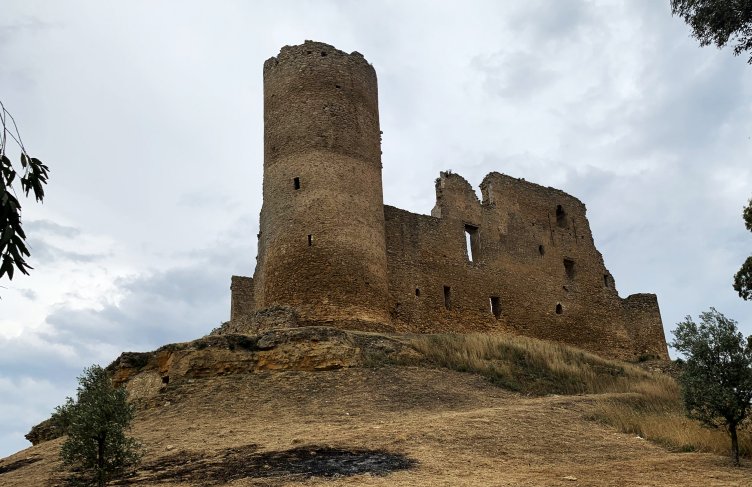Mazzarino
The castle was probably built by the Mazzarino family, although little
is known of them. A Manfred Mazzarino had acquired Migaido castle
in 1200 and presumably he was called such as he held the vill and
possibly Mazzarino castle. In 1287, King James (1285-95) seized
the castle from Giovanni Mazzarino, the son of a Manfred Mongialino,
who had been accused of treason. The next year
gave it to Vital Villanova and before 1292the
town and castle were purchased
by Stephen/Raffaele Branciforti. In 1296 the fee of Mazzarroni
was held by John Lancia. He rebelled the same year and was
executed 2 years later. Presumably the castle returned to royal
control with his rebellion. After this the castle became the
westernmost outpost of the county of Carsiliato when this was
created for Richard Passaneto in 1301.
As the
castle
appears thirteenth century in design it seems unlikely that it was
built before the reign of Frederick II (d.1250). As such it should be compared with fortresses like Augusta (destroyed), Maniace and Frederick's Tower at Enna.
Description
The castle stands on a hill north of the town and forms a rectangle
about 120'x100'. It would appear to have had a round tower at each of
the corners, with that to the southwest being the largest at some 25'
diameter, the other 3 appearing little more than turrets at about 12'
diameter. This design is similar to the castles of Nunney in
England and Ferns are Carlow in Ireland as well as Castel di Lucio.
Entrance to Mazzarino castle was gained from the west via a hole in the
wall gate which has largely vanished. Internal buildings lined
the enceinte, but these too are mostly gone. The surviving southwest
tower is of three storeys and the remaining fragment of west wall still
has some battlements. The fossilised battlements to the south
indicate that the wall here was raised. Surrounding the castle on
its south side are traces of a low outer ward or mantlet. This is
somewhat similar to that found at the thirteenth century Caerphilly and Harlech castles in Wales.
Why not join me at other Sicilian
castles? Information on this and other tours can be found at Scholarly
Sojourns.
Copyright©2019
Paul Martin Remfry

